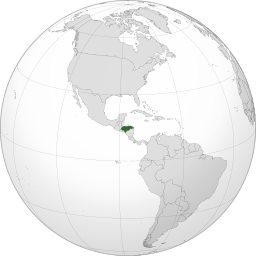[vc_row][vc_column width=”1/2″][vc_column_text]
Honduras
Located in central America, Honduras is the second poorest country in the region with a high Gini-coefficient (which indicates high unequal distribution of income) and underemployment — (1/3rd of the population). The unemployment rate is 5.6% (2018). The country's GDP growth rate was 4.8% in 2017 and 3.7% in 2018 and is projected to grow at 3.3% in 2019 and 3.5% in 2020. Though the poverty rate fell from 60.8% to 52.6% between 2005 and 2017, the country's extreme poverty rate has been the highest in Latin America and Caribbean after Haiti. The economy is hugely dependent on US trade and remittances. Honduras has diversified its export base to include automobile wire harnessing and apparel (from earlier dependent on the export of coffee and bananas). The United States is the country's primary trading partner and is also the source of 2/3rd of Honduras's Foreign Direct Investment (FDI). The free trade agreement signed with the United States [CAFTA-DR (Dominican Republic- Central America FTA)] has helped encourage FDI, but some factors remain which may deter potential investors. These factors include physical and political insecurity, crime and corruption. The country faced rising public debt in 2017, but the performance of the economy has been better due to improved investor confidence and low oil prices. A $113.2 million stand-by agreement was signed with the IMF which aimed at maintaining the country's macroeconomic stability and improve conditions for sustainable economic growth and poverty reduction. Till June 2017, the country was able to meet all the criteria, except the indicative target on the National Electricity Company's (ENEE) operating revenue-to-spending ratio. The following reforms were undertaken: adoption of a fiscal responsibility law, and overhaul of tax administration among others. Increased security efforts by the country's government have brought down the homicide rate from 63.8 (2015) to 41.5 (2019) — per 100,000 inhabitants.
[/vc_column_text][vc_column_text] Its population in 2018 was 9,417,167 [1]
Its population in 2018 was 9,417,167 [1]
 In 2015, 51.54% of its total energy
In 2015, 51.54% of its total energy
consumption was renewable [2]
 In 2021, its GDP grew by 12.53% [2]
In 2021, its GDP grew by 12.53% [2]
 In 2021 it had a negative Current
In 2021 it had a negative Current
Account Balance of US$bn 1.39 [3]
 Its unemployment rate in 2021 was 4.51% [3]
Its unemployment rate in 2021 was 4.51% [3]
 Its Expenditure on R&D (as a percentage of
Its Expenditure on R&D (as a percentage of
GDP) in 2017 was 0.04% [2]
 A Big Mac will set you back the
A Big Mac will set you back the
local equivalent of US$3.49 [4]
What free trade areas or economic unions is it a member of?
Member of the Central America Integration System (SICA) since 13/12/1991
Other members:
Belize, Costa Rica, Dominican Republic, El Salvador, Guatemala, Nicaragua, Panama
What trade deals are there between Central America Integration System and other countries and economic unions?
EU - Central America Association Agreement (from 01/08/2013)
[/vc_column_text][vc_column_text]What trade deals are there with other countries and economic unions?
El Salvador - Honduras - Chinese Taipei free trade agreement (from 01/03/2008)
Chile - Honduras free trade agreement (from 19/07/2008)
Colombia - Northern Triangle free trade agreement (from 12/11/2009)
Mexico - Central America free trade agreement (from 01/09/2012)
Canada - Honduras free trade agreement (from 01/10/2014)
Peru - Honduras free trade agreement (from 01/01/2017)
Korea, Republic of - Central America free trade agreement (from 01/10/2019)
UK - Central America association agreement (from 01/01/2021)
[/vc_column_text][/vc_column][vc_column width=”1/2″][vc_column_text]Don’t Expect Miracles from the Multilaterals
CFI.co Meets the Executive President of CABEI: Dr. Nick Rischbieth
CFI.co Meets the CEO of Banco del País: María del Rosario Selman-Housein
Trade with the United Kingdom
Source: UK Office for National Statistics, October 2022.
Contains public sector information licensed under the Open Government Licence v3.0.
Loading, Please Wait!
This may take a second or two.



















































































